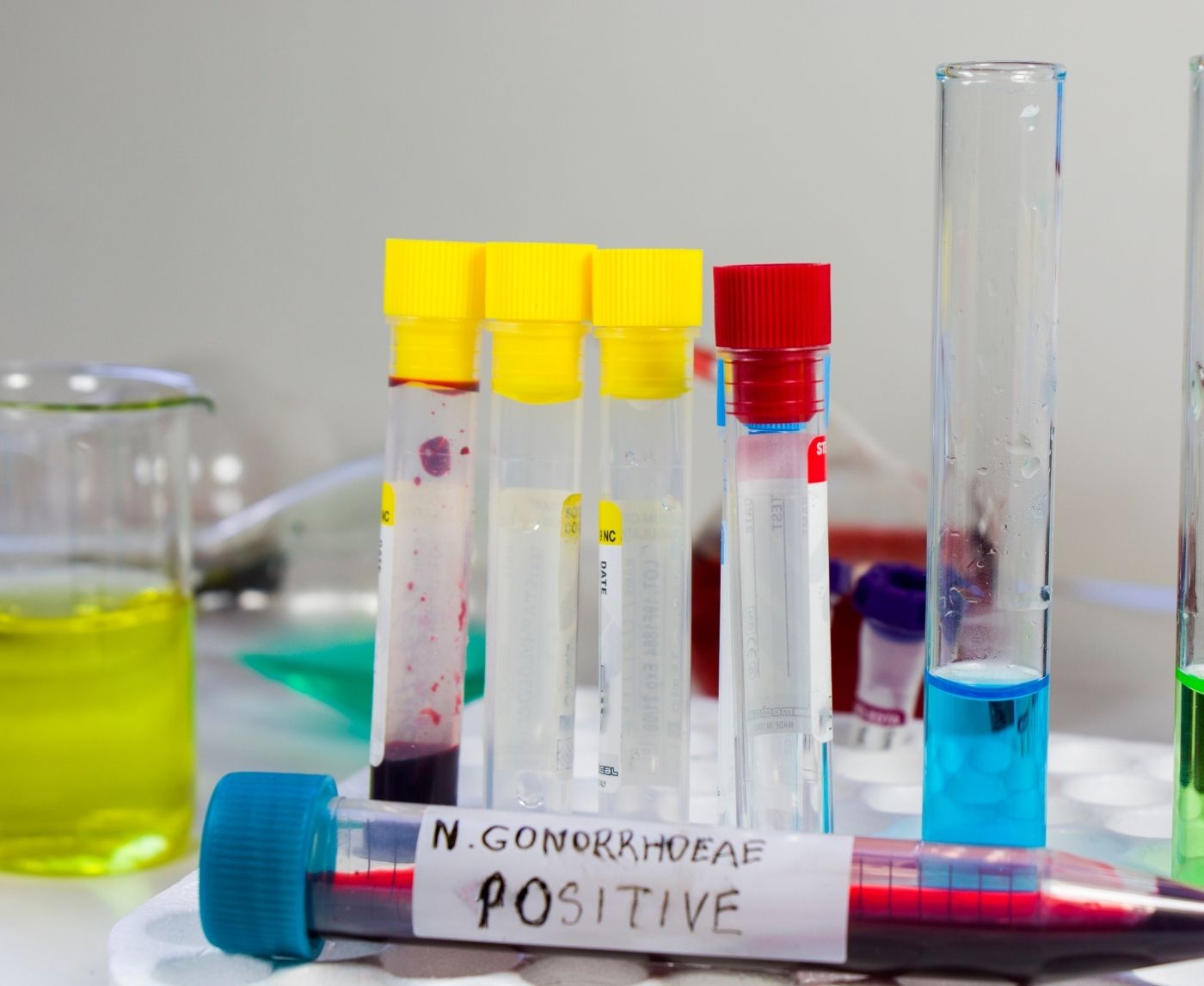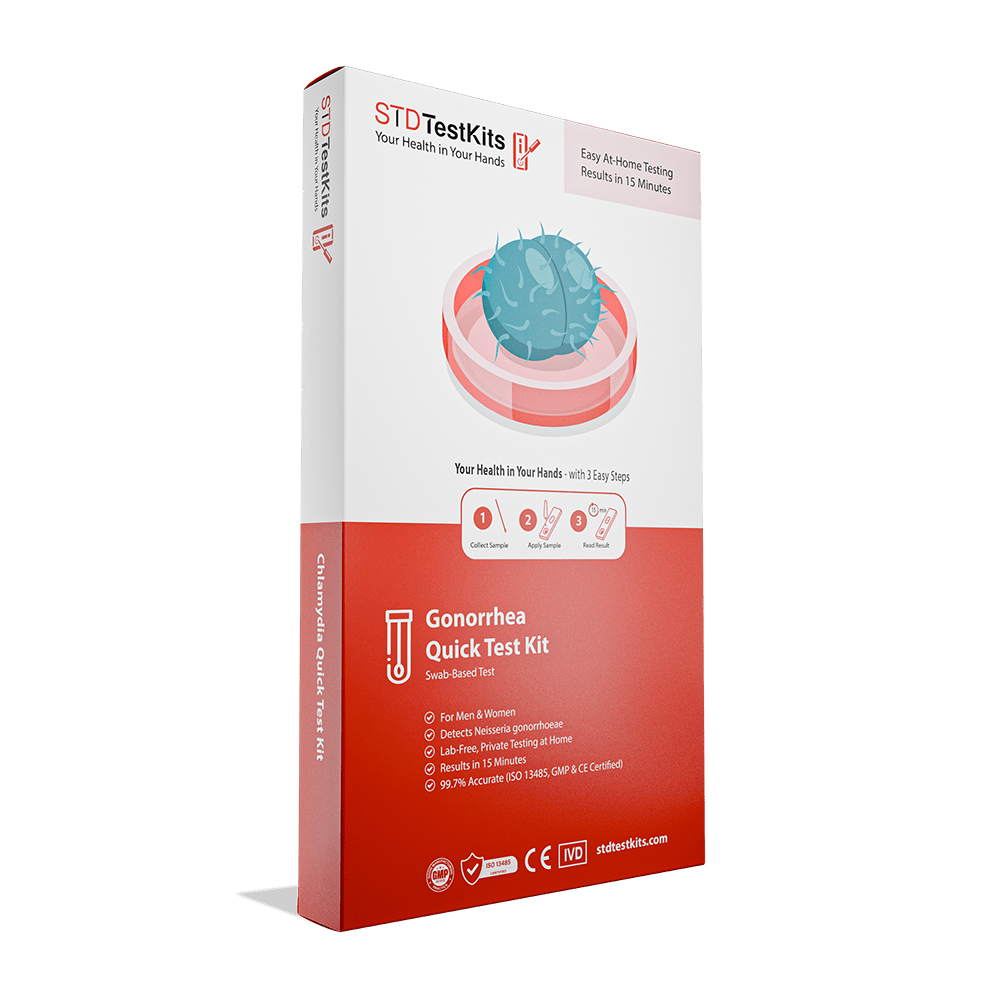Grindr Just Shipped Over a Million HIV Self-Test Kits, Here’s What That Means for You
Quick Answer: Super-gonorrhea is often detectable on standard tests, but not always, especially if testing is too early, the sample misses the site of infection, or the test type doesn’t pick up resistant strains. A negative result doesn’t guarantee you’re in the clear if symptoms persist.
When the Test Says No but Your Body Screams Yes
Let’s talk about that gut feeling, the one you get when your body doesn’t feel right, even if a piece of paper says you're fine. It’s not paranoia. Many people experience this disconnect. Maybe you’ve been here: post-hookup discomfort, weird discharge, an ache you try to blame on laundry detergent. You order a rapid test for peace of mind, it comes back negative, and yet... the symptoms get worse.
Here’s the uncomfortable truth: tests, especially for STDs like gonorrhea, have limits. Standard NAAT tests, the go-to for clinics and at-home labs, are highly sensitive. But they depend on three things being right: timing, sampling site, and strain detection. Miss one, and you could be walking around with a resistant infection your test never picked up.
This is especially true with super-gonorrhea. The bacteria have evolved in ways that outsmart both antibiotics and, in some cases, our tools for finding them. A person might carry a throat infection that doesn’t show on a urine-based test, or have a strain that’s biologically different enough to confuse standard detection methods. Even timing plays a role; test too soon, and the bacteria haven’t replicated enough to show up. Test too late, and treatment might have partially suppressed the load, creating a false sense of resolution.
Why Super-Gonorrhea Is Harder to Detect Than Regular Gonorrhea
To understand why super-gonorrhea is so slippery, it helps to know how gonorrhea is usually caught. Most diagnostic tests look for the bacteria’s genetic material (NAAT), or they try to grow it in a lab culture. Both methods work well for garden-variety gonorrhea. But super-gonorrhea isn’t garden-variety. It’s more like an escape artist, finding new ways to dodge detection by evolving resistance and adapting its behavior inside the body.
What makes it “super” isn’t that it looks different or causes radically worse symptoms, it’s that it resists the very drugs used to treat it. But that resistance can also affect how easily we detect it, especially in cases where testing doesn’t account for the specific strain or location of infection. A throat-only gonorrhea infection, for instance, might not show up in urine or vaginal swabs. If a test isn't site-specific, or if a person assumes one negative test covers all risk areas, the infection slips through the cracks.
Table 1. How common test types detect (or miss) gonorrhea and antibiotic resistance.
Resistance itself isn’t detected in most tests unless a lab specifically cultures the bacteria and exposes it to antibiotics to see what survives. That’s not something a rapid test can do. So unless your provider requests a resistance panel, or unless your symptoms persist and escalate, you may be left in diagnostic limbo.
People are also reading: Not Just a Scare: Why HIV Testing After Anal Sex Could Save Your Life
Negative Doesn’t Always Mean Clear: Real Stories, Real Risks
Angela, 27, thought she did everything right. Her hookup was casual but protected. She waited 10 days, ordered an at-home test kit, and got the results in her inbox two days later. Negative across the board. Relief flooded in, for a week. Then came the fever. Swollen glands. A heavy ache in her pelvis she couldn’t ignore. At urgent care, the doctor ran another round of testing, this time using a throat swab and pelvic exam. The culture took five days, but the diagnosis came back clear: multidrug-resistant gonorrhea. Angela was stunned. How had the first test missed it?
This isn’t a rare scenario. In fact, it's increasingly common. Studies show that the more drug-resistant the strain, the harder it can be to culture, yet paradoxically, culturing is the only way to confirm resistance. Meanwhile, most patients and even providers rely on NAAT testing alone, which flags infection but says nothing about whether it can be treated. The overlap of false negatives and partial diagnoses is where super-gonorrhea thrives.
The emotional impact of this is just as serious as the physical risk. Testing negative gives people permission to relax, move on, or stop using protection. When that negative turns out to be wrong, the betrayal runs deep. It’s not just your body that’s vulnerable, it’s your trust in the system, in yourself, in your ability to stay safe. And that makes timely, accurate testing not just a medical issue, but a psychological one.
Timing Is Everything, But It’s Complicated
If you're dealing with ongoing symptoms, or if you’ve had recent exposure, timing your test can be the difference between clarity and confusion. Gonorrhea has a relatively short incubation period, symptoms can show up as early as 2 days, but may take up to 10. NAATs can usually detect infection after day 5, but accuracy improves by day 7 or later. Test on day 2 or 3? You may get a false negative. Test on day 10? You’re more likely to catch it, but you also might miss the window to start effective treatment if your symptoms are escalating fast.
Here's how accuracy changes over time with typical testing methods. Note that this doesn’t even account for strain-specific resistance or non-genital infections, which require targeted testing at rectal or throat sites.
Table 2. Gonorrhea detection window by test type and time since exposure.
The lesson? You might get a clean result that doesn't reflect reality if you test too soon. If you wait too long, especially after taking medicine on your own or being exposed to antibiotics, cultures may not grow as well, making it harder to confirm resistance. It's a test. Catch-22.
Retesting and That Sinking Feeling
So, what if you tested negative but something still seems wrong? It makes sense to retest, and it's even suggested. If your symptoms don't go away or you think your first test was done too soon, the CDC says you should get tested again for gonorrhea. That's especially true for people who have a lot of partners, have unprotected oral or anal sex, or have symptoms that don't match the result.
Consider Elijah, 33, who started experiencing burning urination and discharge two weeks after a one-time hookup. He tested at day 5, got a negative, then waited. At day 16, still symptomatic, he retested with a provider who swabbed multiple sites. This time? Positive for gonorrhea in the rectum only. His at-home test hadn’t been wrong, it just hadn’t looked in the right place.
The emotional spiral here is real: doubt, fear, shame, anger. You start to question whether your body’s lying to you, whether your sex life has become a risk map you don’t know how to read. Retesting, in this context, becomes an act of reclaiming clarity. And it’s one of the few tools you still control.
If your head keeps spinning, peace of mind is one test away. Order a discreet gonorrhea rapid test kit, or retest through a provider who can swab all relevant sites.
When Treatment Resistance Becomes a Diagnostic Problem
Most people think of antibiotic resistance as a treatment issue. You get diagnosed, you take the pill, it doesn’t work, so you need a stronger one. But resistance is quietly turning into a diagnostic issue, too. Why? Because tests that once reliably confirmed gonorrhea may now miss mutated strains, or fail to indicate whether they’ll respond to first-line antibiotics. You can test positive, start treatment, and never know until weeks later that the infection didn’t clear, because your strain was already two steps ahead.
This is where super-gonorrhea shows its teeth. As resistance spreads, testing alone no longer gives a full picture. You don’t just need to know if you're infected, you need to know whether your infection will respond to ceftriaxone, azithromycin, or any of the few treatments we still have left. And unless your provider requests culture and resistance profiling, that detail is missing from most reports. At-home tests? They stop at detection. If you’re lucky, they catch the infection. But they won’t warn you if the infection is harder to kill.
Testing negative in this landscape can feel like dodging a bullet, or like stepping into one. Either way, it’s not enough. You need testing that answers three questions, not just one: Do I have it? Where is it? And can it be treated?
Table 3. What different test types can and cannot tell you about gonorrhea infection.
People are also reading: From Wilmington to Sussex: Delaware’s Chlamydia Hotspots
The Privacy Trap: Why People Stick to At-Home Testing
Let’s be real, no one loves walking into a clinic and saying, “I think I might have an untreatable STD.” Especially not in small towns, conservative communities, or workplaces where people talk. That’s why at-home STD testing has exploded. It’s private, fast, and shame-reducing. For most infections, it works beautifully. But super-gonorrhea has complicated the equation. It demands testing that many at-home services don’t yet provide, like multi-site swabbing, resistance profiling, or provider follow-up.
Still, for someone like Rae, 21, living with three roommates and no car in a rural town, mailing a discreet urine test from the corner post office felt like the only safe option. “If I had to go in person, I wouldn’t have tested at all,” she says. Even after her results came back negative, she didn’t believe them. “I still had that scratchy throat. It never went away. I just couldn’t deal with the embarrassment of going back.”
Rae’s not alone. For every person who gets tested in a clinic, there are dozens relying on at-home kits, especially across LGBTQ+, immigrant, and youth populations who experience medical bias. That makes it even more critical for these tests to evolve. The solution isn’t to shame people into clinics, it’s to improve access, clarify instructions, and normalize repeat or site-specific testing when symptoms don’t line up.
At-home tests are powerful tools for detection. But they’re just one step. And in the age of super-gonorrhea, they’re not the final word.
What the Future of Testing Needs to Look Like
Gonorrhea has outpaced antibiotics before. What’s new is the scale, and speed, of resistance. According to the WHO and CDC, strains have already emerged in the UK, Japan, and parts of the U.S. that resist nearly every current treatment. As this accelerates, diagnostics will have to catch up. That means more than faster results. It means smarter tests.
We need rapid tests that don’t just detect gonorrhea, but also assess resistance markers in real-time. We need AI-informed platforms that guide users based on risk, exposure route, and site of infection. We need mobile clinics and mail-in kits that include throat and rectal swabs, not just urine. And we need public health messaging that tells the truth: that even a negative test result doesn’t mean you’re clear, especially when symptoms are shouting something else.
Until then, we’re in a hybrid era. You test at home, you confirm at a clinic, and you stay alert to changes in your body. You treat testing not as a one-time shield, but as an ongoing dialogue with your health. That’s the real evolution, making testing personal, persistent, and smarter than the bugs trying to outwit us.
FAQs
1. Can I really have gonorrhea even if my test said negative?
Yep, and it happens more often than you'd think. Sometimes it’s about timing (you tested too soon), sometimes it’s the test itself (it didn’t check the right spot), and sometimes it’s just bad luck. Think of it like checking the weather with a broken app, it might say sunny, but you're still getting soaked. If your body’s waving red flags, don’t ignore it just because a test told you otherwise.
2. Wait, what even is super-gonorrhea? Is it just a scarier name?
Super-gonorrhea is like the bad cousin of gonorrhea. It is not only more aggressive, but it also does not respond to the usual antibiotics. That means that standard treatments might not work, which makes it harder to both diagnose and treat the problem. It's not a villain from Marvel, but it's a real threat, especially if it goes unnoticed because of how tests used to be done.
3. So will an at-home test catch super-gonorrhea?
It might catch the infection, yes, but it won’t know if it’s drug-resistant. Think of it like this: the test can tell you there’s a fire, but not whether you’ve got a fire extinguisher that works. If symptoms stick around after testing, it’s worth leveling up to a culture test through a provider.
4. How long should I wait to test after a risky hookup?
Most experts suggest waiting 7 to 14 days to get accurate results for gonorrhea. Earlier than that, and your body might not be carrying enough of the bacteria for a test to catch. If you’re anxious (understandably so), you can test sooner, but prepare to test again a bit later for confirmation. Yes, it’s annoying. But so is untreated gonorrhea.
5. Can I have gonorrhea in my throat and not know it?
100%. In fact, a lot of throat infections don’t come with obvious symptoms, and they’re the easiest to miss if your test only checks urine. That’s why site-specific testing matters. Oral sex can transmit STDs too, and a sore throat that won't quit might not just be allergies or a cold.
6. Why do my symptoms keep getting worse if my test was negative?
Because your body knows what’s up, even if the test didn’t catch it. Maybe it was the wrong sample site. Maybe it was too early. Maybe you’re dealing with a resistant strain that’s being sneaky. Either way, if your symptoms are still yelling at you, it’s time to retest or see a provider for a deeper look.
7. Is super-gonorrhea curable?
In many cases, yes, but not with the same one-shot treatment most people get. It may take a custom combo of antibiotics or a referral to an infectious disease specialist. The sooner it’s identified, the better your odds of getting the right meds before complications set in.
8. Could I be spreading it without knowing?
Unfortunately, yes. If you tested too early or didn’t test the right location (like your throat or rectum), you might still be infectious. That’s why it’s worth being honest with partners, even if your last test came back negative. Testing is a tool, not a guarantee.
9. Why does my gonorrhea keep coming back?
It might not be “coming back” so much as “never fully gone.” That could mean a resistant strain, an untreated partner reinfecting you, or that your treatment wasn’t matched to your infection. If you’ve been treated and it’s still showing up, it’s time to get specific about test sites and maybe ask for a culture and resistance panel.
10. Does gonorrhea always show symptoms?
Nope. Especially in the throat or rectum, it can hang out quietly for weeks, or months, without setting off any alarm bells. That’s what makes it so sneaky. Don’t wait for symptoms to test, and don’t assume you’re fine just because you feel okay. Regular testing is still your best defense.
You Deserve Answers, Not Assumptions
If you’ve ever felt betrayed by a negative test that didn’t match your body’s truth, you’re not alone, and you’re not overreacting. In the age of super-gonorrhea, clear answers are harder to come by. But that doesn’t mean you have to stay in the dark. Testing is still powerful. Retesting is smart. And trusting your symptoms is valid.
Don’t wait and wonder, get the clarity you deserve. This at-home combo test kit checks for the most common STDs discreetly and quickly. If anything still feels off after testing, reach out to a provider for site-specific follow-up. Your body isn’t lying. And you’re not alone in this.
How We Sourced This Article: We combined current guidance from leading medical organizations with peer-reviewed research and lived-experience reporting to make this guide practical, compassionate, and accurate.
Sources
1. WHO: Sexually Transmitted Infections Fact Sheet
2. Gonococcal Infections Among Adolescents and Adults - CDC
3. Drug‑Resistant Gonorrhea - CDC
4. The Management of Gonorrhea in the Era of Emerging Antimicrobial Resistance
5. Detection of antibiotic resistance is essential for gonorrhoea point‑of‑care tests
7. Chlamydial and Gonococcal Infections: Screening, Diagnosis, and Management
8. STD: Antibiotic‑Resistant Gonorrhea | Wisconsin Department of Health Services
About the Author
Dr. F. David, MD is a board-certified infectious disease specialist focused on STI prevention, diagnosis, and treatment. He blends clinical precision with a no-nonsense, sex-positive approach and is committed to expanding access for readers in both urban and off-grid settings.
Reviewed by: Dr. Haley Tran, MPH | Last medically reviewed: November 2025
This article is for informational purposes and does not replace medical advice.







